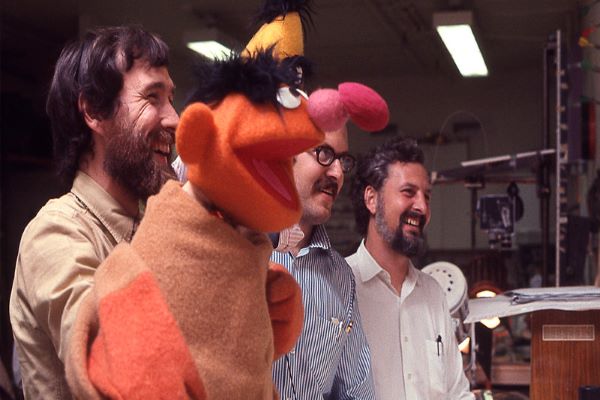Often viewed as some kind of epiphanic lightning-in-a-bottle burst of genius, Sesame Street practically invented the idea of ‘Edutainment’. The truth of its success is however far more mundane and bureaucratic than you may expect, but no less magical for its alchemy having been performed in endless focus groups and workshops. Marilyn Agrelo’s reverential oral history Street Gang: How We Got to Sesame Street is almost as exhaustive as the work that went in to making the show instantly iconic and enduringly beloved for half a century.
Composed of a wealth of archive interviews, footage from the show, and innumerable conversations with those involved in its creation, whether in front of the camera or behind, Street Gang is workaday in presentation and resolutely linear in structure. It traces the creation of Sesame Street from a simple brief – ‘Find out what the kids want to watch, and combine that with what would be good for them to watch’ – to its inception by producer Joan Cooney, psychologist Lloyd Morrisett, and writer and director Jon Stone, the recruitment of Jim Henson and his Muppet Workshop, and the series’ status from instant success on its launch in 1969 to cultural phenomenon.
There is nothing in the documentary that is not already in the public domain, so Street Gang functions solely as an unabashed celebration of a show that deserves to be feted. We get the expected archive interviews with Stone and Henson – both now long since passed – and extensive chats with the ludicrously sprightly nonagenarians Cooney and Morrisett, the pair seemingly having found the fountain of youth being part of the show. There are lovely chats with (human) cast members Bob McGrath (Bob), Sonia Manzano (Maria), and both Gordons, the late Matt Robinson and Roscoe Orman. Presumably, having Kermit and co. rock up to reminisce would have been slightly too irreverent.
Much of the documentary rightly focuses on Sesame Street‘s targeting of inner city black and latino children being increasingly disadvantaged in pre-school education, and the aim to give them a more solid grounding in numbers and the alphabet prior to them beginning elementary school. The setting itself, a cluttered Harlem street, was exactly the surroundings these children were likely to find familiar. Nowhere else were they likely to find children on TV that looked like them either. And while education was always the primary focus, and concerned with multiculturalism and diversity, it was never didactic. “They didn’t talk about integration,” says one contributor. “They simply showed it.”
Street Gang also shows some of the trailblazing highlights from its countless episodes. There are appearances from Stevie Wonder, Johnny Cash, Odetta Holmes, and B.B. King among others. Yet the undoubted zenith is their decision to incorporate the death of Mr. Hooper actor Will Lee into the show in 1983. Using Big Bird as their conduit for explaining the concept of death, its simple humanism, lack of patronisation and a gentle insistence that no, he’s gone for good will reopen tear ducts that have been worked even harder than popcorn biceps this festival. As a piece of television, it was perfection.
The same can’t entirely be said for Street Gang. The banality of its format is hardly parallel to the unruly inventiveness of its subject, and you can also argue that Sesame Street has been hardly short of lionisation over the last 50 years, so this documentary is something of a puff piece that hardly needs to exist. Nevertheless, its an irresistible and complete overview of perhaps one of the most important and ground-breaking TV shows ever made, for kids or otherwise. While there are hints of the darker aspects of the characters behind it, it’s an overwhelmingly positive and instructive map of how to get to Sesame Street.
Screened as part of Sundance Film Festival 2021
